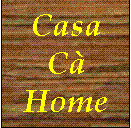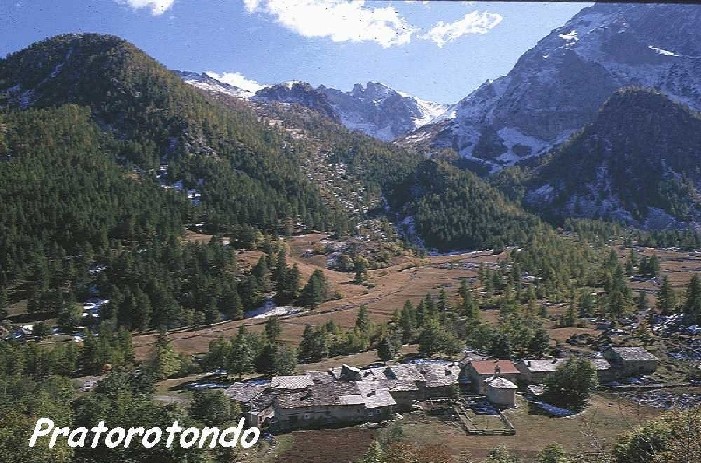


Piedmontese Grammar
We will start considering Articles and Prepositions. Even if prepositions are invariant parts usually considered later, here they are considered together articles due to their property of combining with articles into " prepositions linked with article". This ability, in Piedmontes, is anyway reduced with respect Italian.
Determinant articles can produce prepositions linked with article, i.e. unique short words acting at the same time as article and preposition. Articles are in concordance, for gender and number, with the noun they are associated to. In Piedmontese they are very important, since often the nouns they are associated to, are invariant with respect the number, and the article is the way for distinguishing singular from plural. In the same way the article is useful for defining in an unique way, the gender of the noun.
Determinant articles
They are the particles that translate the english the.
For the masculine singular the articles are:
1) - ël For nouns starting with consonant, with the exceptions indicated below. (ël ciò = the nail)
2) - lë For nouns starting with the group s+consonant or with a "strong s" (usually a s followed by a diphthong), or starting with particular groups of consonants. (lë strass = the rag , lë siass = the sieve , lë mnis = the litter)
3) - l' For nouns starting with vowel. (l'aso = the donkey)
4) - 'l For the cases at point 1), when the preceding word ends with a vowel. (torna 'l prim = again the first)
If the preceding word ends by vowel and the noun starts by vowel, the rule is as for point 3), since the rule 4) is not strictly mandatory. (torna l'aso = again the donkey).
For the masculine plural the articles are:
1) - ij For nouns starting with consonant, with the exceptions indicated below. (ij ciò = the nails)
2) - jë For nouns starting with the group s+consonant or with a "strong s" (usually a s followed by a diphthong), or starting with particular groups of consonants. (jë strass = the rags , jë siass = the sieves , jë mnis = the litters)
3) - j' For nouns starting with vowel. (j'aso = the donkeys)
No matter what is the end of the preceding vowels.
For the feminine singular the articles are:
1) - la For nouns starting with consonant. (la cà = the house , la strà = the street)
3) - l' For nouns starting with vowel. (l'ala = the wing)
No matter what is the end of the preceding vowels.
For the feminine plural the articles are:
1) - le For nouns starting with consonant. (le cà = the houses , le strà = the streets)
3) - j' For nouns starting with vowel. (j'ale = the wings)
When these articles are associated with prepositions (i.e. of the... , to the ... , from the ... , etc.), also in Piedmontese there are some prepositions linked with article, as in Italian, but only in a fewer number of cases. For this the relevant prepositions are:
1) - ëd ; dë d' ; 'd all the four mean of and their use is the same as for the masculine singular article seen above.
2) - a that can mean to or, in some cases at and in other cases into.
3) - da that can mean from or, in other cases by.
4) - an ; ën that can mean in or inside and in other cases into.
5) - con standing for with.
6) - su standing for on.
7) - për standing for for.
6) - fra standing for between or among.
Possible combinations are shown in the following table which is self-explaining. The first column contains all the forms of the determinant articles, while the first row contains the prepositions that are often used in connection to an article. The second column shows when the various forms of the articles are used, and the second row shows when the various forms of the preposition of (the only one having different forms) are used. Then each cell of the table, which is the crossing point of an article and a preposition, shows if a preposition linked with article (unique particle) is generated, or if the two remain separated particles. The empty cells are of situations that cannot exist.
We draw the attention on two particularities. The first is that the preposition an, ën = in , when associated to an article, becomes ant. The second is that usually, (not always but often) in Piedmontese, the preposition su = on is preceded by the preposition an. We will repeat these points in the examples, and in Syntax.
| ..Prepos. Artic..... |
. | of |
of |
of |
of |
to |
from |
in |
with |
on |
for |
among |
| (the) | Usage | as for ël | as for lë | as for 'l | as for l' | . | . | . | . | . | . | . |
ël |
before nouns starting for consonant |
of the |
to the |
from the |
in the |
with the |
sël on the |
for the |
tra'l among the |
|||
lë |
before nouns starting for "impure" or strong s |
of the |
of the |
to the |
from the |
in the |
with the |
slë in the |
for the |
tra lë among the |
||
'l |
after vowel before nouns starting for consonant |
of the |
to the |
from the |
in the |
with the |
sël on the |
for the |
tra'l among the |
|||
l' |
before nouns starting for vowel |
of the |
of the |
to the |
from the |
in the |
with the |
sl' on the |
for the |
tra l' among the |
||
la |
before nouns starting for consonant |
of the |
of the |
to the |
from the |
in the |
with the |
sla on the |
for the |
tra la among the |
||
l' |
before nouns starting for vowel |
of the |
of the |
to the |
from the |
in the |
with the |
sl' on the |
for the |
tra l' among the |
||
ij |
before nouns starting for consonant |
of the |
to the |
from the |
in the |
with the |
sij on the |
for the |
tra ij among the |
|||
jë |
before nouns starting for "impure" or strong s |
of the |
of the |
to the |
from the |
in the |
with the |
sjë on the |
for the |
tra jë among the |
||
j' |
before nouns starting for vowel |
of the |
of the |
to the |
from the |
in the |
with the |
sj' on the |
for the |
tra j' among the |
||
le |
before nouns starting for consonant |
of the |
of the |
to the |
from the |
in the |
with the |
sle on the |
for the |
tra le among the |
||
j' |
before nouns starting for vowel |
of the |
of the |
to the |
from the |
in the |
with the |
sj' on the |
for the |
tra j' among the |
We observe that the preposition that translated the english of has, in piedmontese, different forms that depend, as for the articles ël, lë, on the initial of the word which they are associated to.
Some examples:
ël capél the hat (masculine) ; ij capéj the hats (masculine)
lë stupid the fool man ; jë stupid the fool men ; la stupida the fool woman ; le stupide the fool women
l'aso the donkey (masculine) ; j'aso the donkeys (masculine)
l'ània the duck (feminine) ; j'ànie the ducks (feminine).
pòrta 'l can bring the dog (instead "of porta ël can", which is not strictly wrong, but it sounds badly).
sòn a l'é fàit ëd pàuta = This is made of mud
sòn a l'é fàit dë stagn = This is made of tin. Also possible: sòn a l'é fàit d'ëstagn (prosthetic ë added).
sòn a l'é fàit d'aram = This is made of copper. Note that only the preposition dë can be shorted in d' when followed by vowel, while the preposition da remains unchanged in these cases.
Also the possessive case makes use of the preposition dë and its modifications:
Ël negòssi dël pruché = The barber's shop. (literally: the shop of the barber).
L'àngol dla strà = The way's corner. (literally: the corner of the way).
Sla cadrega or An sla cadrega On the chair (the second form, very common, literally is In on the chair). When the preposition su = on is articled, usually is preceded by then preposition an = in. See also Syntax.
Ant ël canton In the corner. When the preposition an = in is accompained by an article it does not generate prepositions linked with article, but it changes into ant. This is a general rule.
Al pais At the village but also To the village. The two english prepositions at, to are both translated into the piedmontese a.
Ant ëcà or antëcà At home. This is a particular expression (literally in home using the form ant instead of an and with a prosthetic ë). It is an idiomatic piedmontese expression.
Fra le doe Between the two. We observe that "among" and "between" are translated in the same way, using fra. Neolatin languages do not distinguish between the two concepts.
We still observe that the two english prepositions by, from, in piedmontese are both translated into da. Of course the two concepts remain differend, and are distinguished by the context of the sentence. Mi i ven-o da Susa = I am coming from Susa ; Sòn a l'é fàit da chièl = This is made by him.
The same we cal say about the english prepositions in, into. Usually they are translated with an. Sometimes into is translated also with a, that express the motion towards a place. See also below,
Still about prepositions
Later, while speaking about syntax, we will better see what complements are associated to the various prepositions. In some cases piedmontese complements make use of prepositions that are different from the ones used in Italian, in French and in English, Here we recall what is the piedmontese translation of the most common english prepositions, used for making complements:
in, inside, into are translated into: an, ën
to, at, into are translated into: a
among, between are both translated into: tra or fra (the first is less used).
on, upon, up, above are all translated into: su or dzora (d'sora)
under, below are translated into: sota
of, from, with, for are respectively translated into: dë (ëd), da, con, për
We note that the two english prepositions from, by are both translated into the piedmontese preposition da.
Other prepositions can be found in the vocabulary. In piedmontese sometimes more than one preposition can be connected to form a prepositive locution, often having an idiomatic character. In the following we report some prepositions and prepositive locutions.
piedm.: drinta, engl.: in, inside.
piedm.: fòra, engl.: out, outside.
piedm.: danans, engl.: in front.
piedm.: darera, engl.: behind.
piedm.: dòp, engl.: after.
piedm.: vers, engl.: toward.
piedm.: dë'd sà, engl.: on this side.
piedm.: dë'd là, engl.: beyond.
piedm.: da's për tut, engl.: everywhere.
Some particular usage of prepositions, as already mentioned, is described in Syntax. Other piedmontese prepositions are in the Vocabulary.
Undeterminant articles
This type of articles are, of course, only singular, and they have a masculine form and a feminine one. Their usage is similar to the one of the corresponding english articles a, an.
For the masculine:
un, ('n) is used in the same way as ël ('l), in front of nouns starting with consonant. The initial apostrophe is for the case in which the article follows a word ending by vowel. For example un tòch = a piece, torna 'n tòch = again a piece.
në, n' are used in the same way as lë (l'), in front of nouns starting with inpure or strong s (or some other particular consonantic group) and, respectively, in front of nouns starting by vowel. For example në stopon = a cork, n' aso = a donkey.
For the feminine:
un-a, na is used in front of nouns starting with any type of consonant. The second form is the most common, and it is always used if the preceding word ends by vowel or if this article is the first word of a sentence. For example na fomna = a woman, un-a galin-a = a hen. This second expression recalls a "numeral" idea.(one hen). Sometimes we can also find the graphy: una instead of un-a.
n' is used in front of nouns starting with a vowel. For example n'ània = a duck.

Another alpine village in Maira valley
.
.
(photo B. Garmondi)
.
